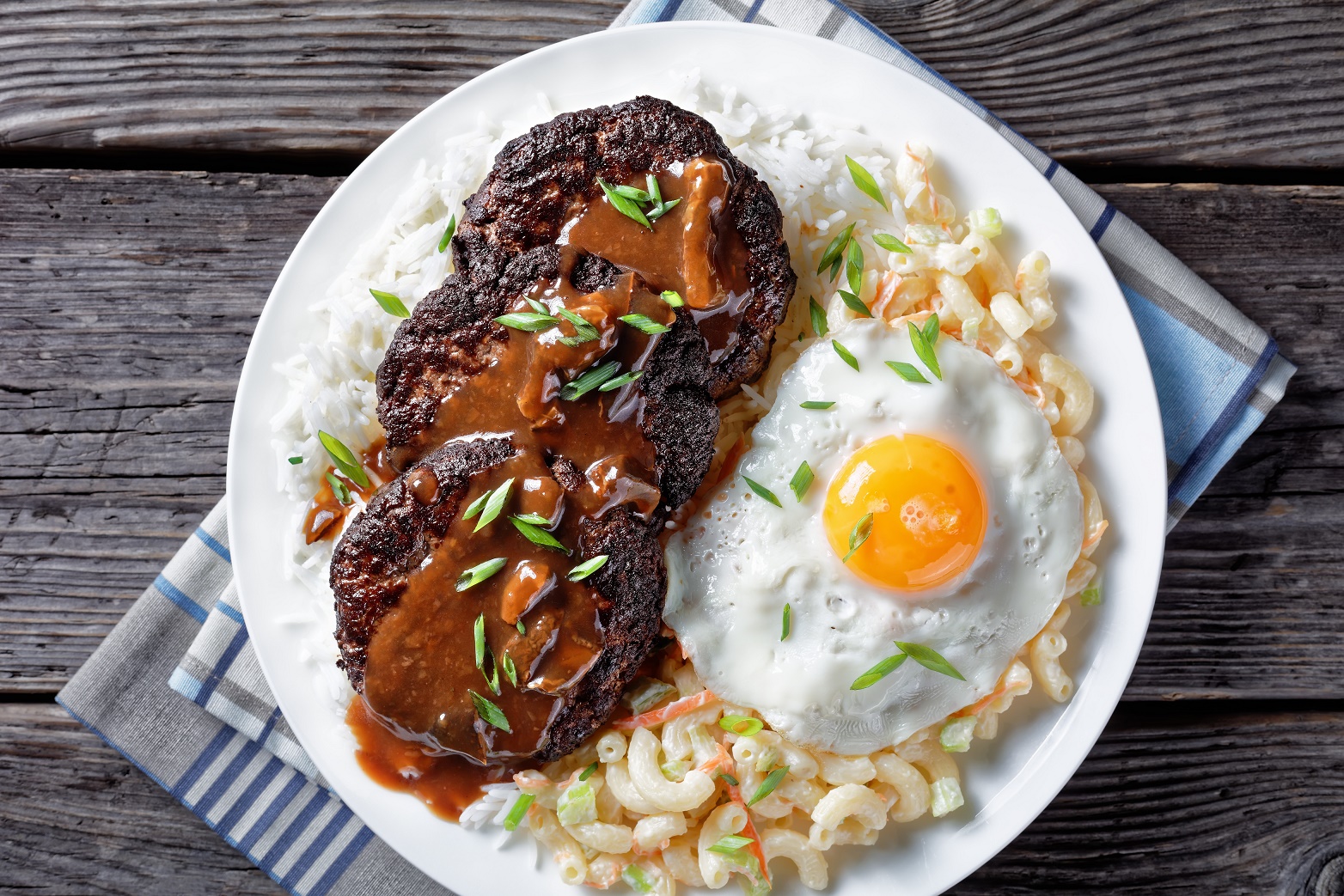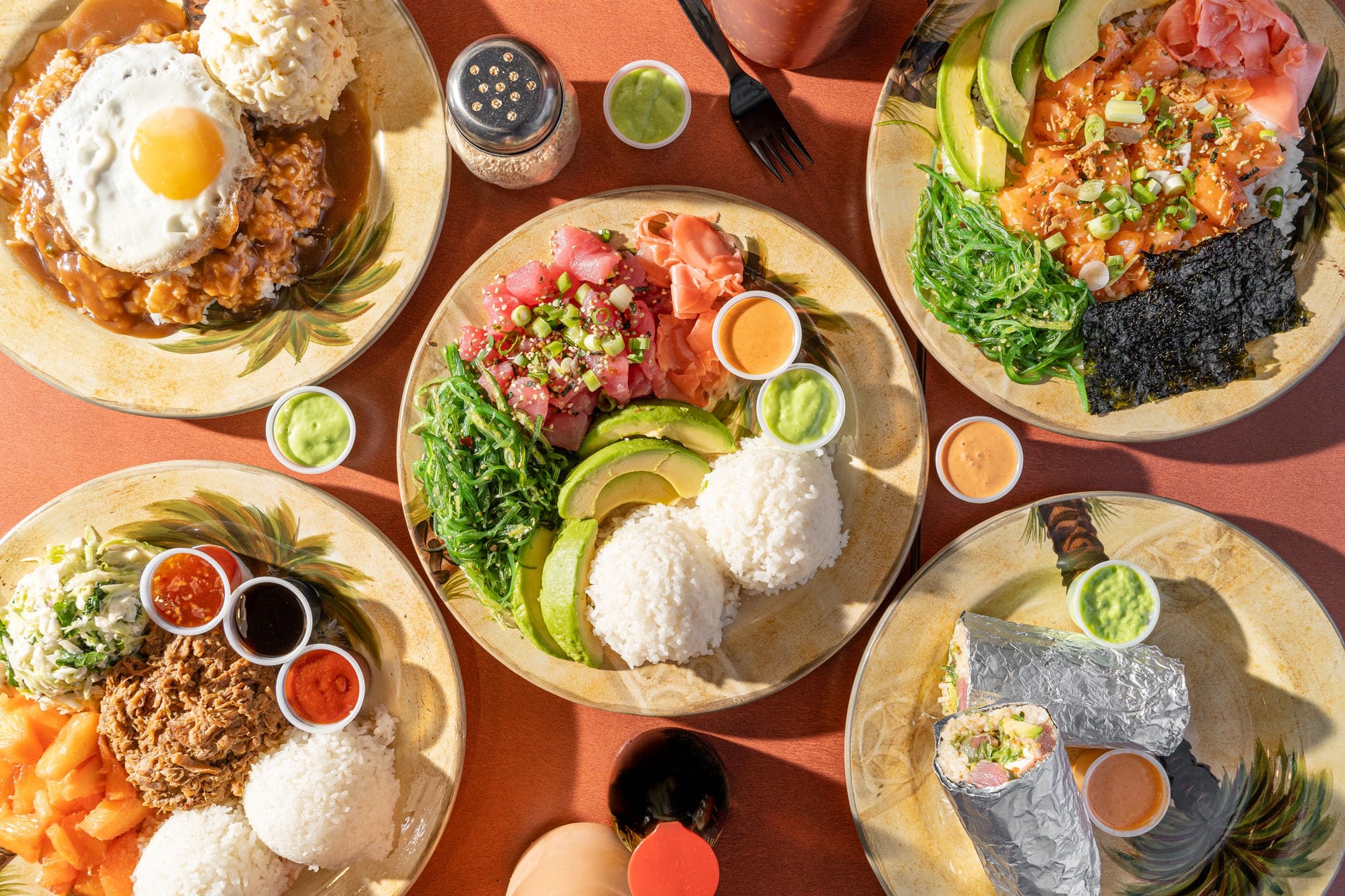Embark on a tantalizing culinary adventure as we explore the vibrant flavors and rich traditions of the best Hawaiian food. From the succulent kalua pig to the refreshing poke, Hawaiian cuisine offers a harmonious blend of indigenous ingredients, cultural influences, and modern innovations that will captivate your taste buds and leave you craving for more.
Immerse yourself in the unique flavors and cooking techniques that have shaped Hawaiian gastronomy, and discover the deep connection between food and Hawaiian culture.
Culinary Highlights of Hawaiian Cuisine: Best Hawaiian Food

Hawaiian cuisine is a vibrant tapestry of flavors and traditions that reflects the unique cultural heritage of the islands. From the sweet and tangy poke to the savory kalua pig, Hawaiian food showcases a harmonious blend of Polynesian, Asian, and American influences.
One of the defining characteristics of Hawaiian cuisine is its use of fresh, local ingredients. The abundance of tropical fruits, seafood, and vegetables in Hawaii has greatly influenced the development of its culinary traditions. Fruits like pineapple, papaya, and mango add sweetness and acidity to dishes, while seafood like ahi tuna, mahi-mahi, and shrimp provide a rich source of protein.
Cultural Influences
The culinary traditions of Hawaii have been shaped by a variety of cultural influences. The indigenous Polynesian settlers brought with them their own cooking techniques and ingredients, such as the use of the imu, an underground oven, for cooking meats and vegetables.
In the 19th century, the arrival of missionaries, traders, and plantation workers from Asia and Europe introduced new ingredients and cooking methods to Hawaii. Chinese immigrants brought their love of rice, soy sauce, and stir-frying, while Japanese immigrants introduced sushi, tempura, and other dishes.
American settlers contributed their own culinary traditions, such as the use of beef, pork, and dairy products.
Popular Hawaiian Dishes

Hawaiian cuisine is a vibrant and flavorful blend of indigenous, Polynesian, Asian, and American influences. Among the many delectable dishes that have emerged from this culinary melting pot, a few stand out as iconic representations of Hawaiian food.
These dishes not only tantalize the taste buds but also hold significant cultural and historical importance within the Hawaiian community.
Poi
Poi is a staple food in traditional Hawaiian cuisine, made from the pounded root of the taro plant. Its starchy texture and mild flavor make it a versatile accompaniment to many Hawaiian dishes, from savory kalua pig to sweet haupia.
Poi holds cultural significance as a symbol of Hawaiian identity and is often served at special occasions and ceremonies.
Kalua Pig
Kalua pig is a traditional Hawaiian dish made by cooking a whole pig in an underground oven called an imu. The meat is seasoned with salt and wrapped in banana leaves before being buried in the imu and cooked for several hours.
Kalua pig is a centerpiece of many Hawaiian feasts and celebrations, representing the abundance and hospitality of the Hawaiian culture.
Loco Moco
Loco moco is a modern Hawaiian dish that has become a local favorite. It consists of a hamburger patty served on a bed of rice, topped with a fried egg and smothered in gravy.
Loco moco is a beloved comfort food that reflects the fusion of Hawaiian and American culinary influences.
Regional Variations in Hawaiian Food
The diverse geography and local ingredients of Hawaii’s islands have given rise to distinct regional variations in Hawaiian cuisine. Each region offers unique culinary experiences, showcasing the influence of its environment and cultural heritage.
Oahu
As the most populous island, Oahu is a melting pot of culinary influences. Honolulu, the state capital, boasts a wide array of dining options, from traditional Hawaiian fare to international cuisine. Local specialties include:
- Loco Moco:A classic Hawaiian dish featuring rice topped with a hamburger patty, fried egg, and brown gravy.
- Spam Musubi:A popular snack or appetizer consisting of a block of spam wrapped in rice and seaweed.
Maui
Maui is known for its lush valleys and fertile farmlands. The island’s cuisine emphasizes fresh, local ingredients, such as:
- Kalua Pig:A traditional Hawaiian dish where a whole pig is roasted in an underground oven.
- Opihi:A type of sea snail served raw or cooked, often as an appetizer.
Big Island (Hawaii)
The Big Island is the largest and most diverse of the Hawaiian islands, offering a wide range of culinary experiences. Its volcanic landscapes and rich agricultural areas contribute to unique regional dishes:
- Poi:A staple Hawaiian food made from mashed taro root.
- Huli Huli Chicken:A grilled chicken dish marinated in a sweet and savory sauce.
Kauai
Kauai is the oldest of the main Hawaiian islands, with a rugged coastline and lush interior. Its cuisine reflects its unique environment and cultural influences:
- Kalua Pig Tacos:A fusion dish combining traditional Hawaiian flavors with Mexican influences.
- Li Hing Mui Shave Ice:A popular dessert featuring shaved ice topped with a sweet and sour plum syrup.
Hawaiian Seafood Delicacies
The Hawaiian Islands are renowned for their abundant and diverse marine life, which has significantly influenced the culinary traditions of the region. Seafood holds a central place in Hawaiian cuisine, offering a wide array of flavors and textures that reflect the unique geographical and cultural heritage of the islands.
Popular Seafood Dishes
Among the most popular seafood dishes in Hawaii is poke, a raw fish salad that is typically made with ahi tuna, salmon, or octopus. The fish is marinated in a flavorful blend of soy sauce, sesame oil, green onions, and other seasonings, resulting in a dish that is both refreshing and savory.
Lau lau is another beloved Hawaiian dish that features seafood. This traditional dish consists of fish, pork, or chicken wrapped in taro leaves and steamed until tender. The taro leaves impart a unique earthy flavor to the dish, while the seafood provides a delicate and flaky texture.
Opihi, a type of limpet found in Hawaiian waters, is also a popular delicacy. These small shellfish are typically served raw, with a squeeze of lemon juice and a dash of salt. Opihi has a slightly briny flavor and a chewy texture that is reminiscent of abalone.
Cultural Significance
Seafood has played a vital role in Hawaiian society for centuries. The islands’ early inhabitants relied on fishing as a primary source of sustenance, and seafood remains an integral part of the Hawaiian diet today. Many traditional Hawaiian dishes, such as poi, kalua pig, and haupia, are often accompanied by seafood, reflecting the deep connection between the Hawaiian people and the ocean.
In addition to its culinary significance, seafood also holds cultural and spiritual importance in Hawaiian society. Fish are often seen as symbols of prosperity and abundance, and certain species, such as the humuhumunukunukuapuaa (reef triggerfish), are considered sacred.
Traditional Hawaiian Cooking Methods
Traditional Hawaiian cooking methods have played a vital role in preserving the culinary heritage of the islands. These methods, passed down through generations, showcase the unique flavors and techniques that define Hawaiian cuisine.
One of the most iconic traditional cooking methods is imucooking. Imu involves digging a pit in the ground, lining it with hot rocks, and placing food, such as whole pigs or fish, wrapped in leaves, on top. The pit is then covered with more rocks and earth, and the food is cooked slowly over several hours.
Another essential traditional method is poi pounding. Poi is a staple Hawaiian food made from cooked taro root. Traditionally, taro root is pounded into a smooth paste using a large stone mortar and pestle. This laborious process can take hours, but it results in a delicious and nutritious food that is an essential part of the Hawaiian diet.
These traditional cooking methods are not only a way to prepare food but also a way to connect with Hawaiian culture and history. They have been passed down through generations and continue to be used today to create authentic Hawaiian dishes.
Imu Cooking
- Imu cooking is a traditional Hawaiian method of cooking food in an underground oven.
- A pit is dug in the ground, and hot rocks are placed at the bottom.
- Food, such as whole pigs or fish, is wrapped in leaves and placed on top of the rocks.
- The pit is then covered with more rocks and earth, and the food is cooked slowly over several hours.
- Imu cooking produces tender and flavorful food that is infused with the smoky flavor of the hot rocks.
Poi Pounding
- Poi pounding is a traditional Hawaiian method of preparing poi, a staple Hawaiian food made from cooked taro root.
- Taro root is cooked until soft, and then it is pounded into a smooth paste using a large stone mortar and pestle.
- Poi pounding is a laborious process that can take hours, but it results in a delicious and nutritious food that is an essential part of the Hawaiian diet.
- Poi can be eaten as a side dish or used as an ingredient in other dishes, such as poi mochi or poi soup.
Modern Hawaiian Cuisine

In recent years, Hawaiian cuisine has undergone a renaissance, with modern chefs pushing the boundaries of traditional flavors while preserving the essence of the islands’ culinary heritage. These chefs are incorporating new ingredients, techniques, and influences from around the world, creating innovative dishes that celebrate the unique flavors of Hawaii.
One of the most notable trends in modern Hawaiian cuisine is the use of local and seasonal ingredients. Chefs are working closely with farmers and fishermen to source the freshest and highest-quality ingredients, which they then use to create dishes that are both authentic and contemporary.
Contemporary Hawaiian Dishes
- Poke bowls: A modern take on the traditional Hawaiian dish, poke bowls feature marinated raw fish served over rice, vegetables, and other toppings.
- Loco moco: A Hawaiian comfort food classic, loco moco is a hamburger patty served over rice, topped with a fried egg and gravy.
- Spam musubi: A popular Hawaiian snack, spam musubi is made with grilled spam slices wrapped in rice and seaweed.
Cultural Significance of Hawaiian Food
Food holds a profound place in Hawaiian culture, deeply intertwined with the islands’ history, traditions, and way of life. It serves as a central pillar of community gatherings, festivals, and daily rituals.
Role in Hawaiian Festivals and Ceremonies
Hawaiian food plays a crucial role in the celebration of festivals and ceremonies. Traditional dishes, such as poi, kalua pig, and lau lau, are prepared and shared during these events. Food offerings are made to honor ancestors and deities, fostering a sense of connection and reverence.
Integration into Daily Life
Food is not merely sustenance in Hawaiian culture but an integral part of daily life. Family meals are a time for sharing, laughter, and storytelling. Traditional foods, such as poke and opihi, are often consumed as snacks or appetizers throughout the day.
Anecdote: The ‘Ono’ Spirit, Best hawaiian food
The Hawaiian word ‘ono’ means ‘delicious’ but carries a deeper cultural significance. It embodies the joy, satisfaction, and sense of community that food brings. When Hawaiians say something is ‘ono,’ they are not just referring to its taste but also to its cultural and emotional value.
Top FAQs
What is the most popular Hawaiian dish?
Loco moco, a hearty dish of rice topped with a hamburger patty, fried egg, and brown gravy, is one of the most iconic and beloved Hawaiian dishes.
What is the traditional Hawaiian method of cooking called?
Imu cooking, which involves cooking food in an underground oven lined with hot rocks, is a traditional Hawaiian cooking method that has been passed down for generations.
What are some of the unique ingredients used in Hawaiian cuisine?
Taro, pineapple, macadamia nuts, and poi are just a few of the unique and flavorful ingredients that are commonly used in Hawaiian cooking.
